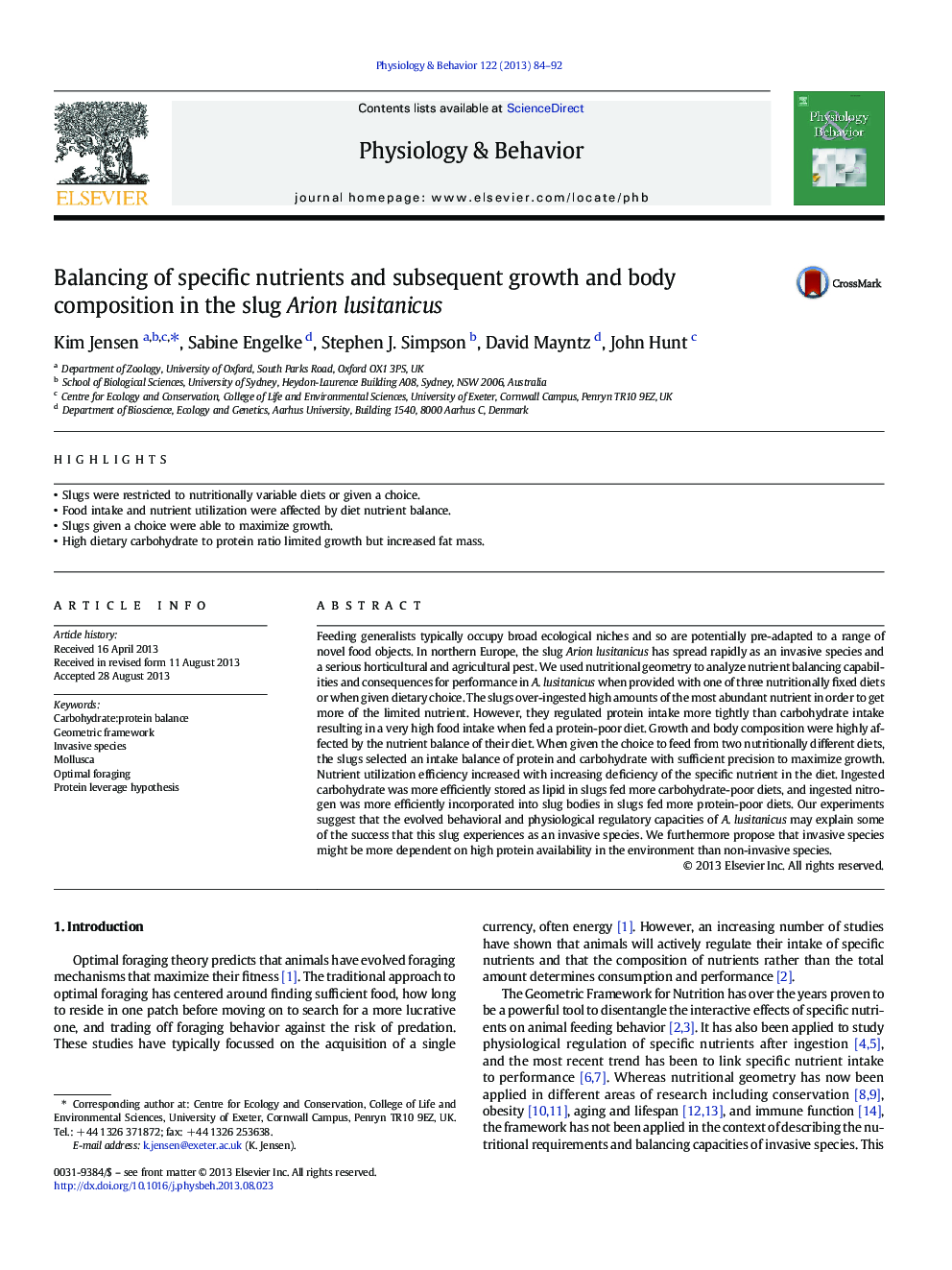| کد مقاله | کد نشریه | سال انتشار | مقاله انگلیسی | نسخه تمام متن |
|---|---|---|---|---|
| 5924347 | 1571195 | 2013 | 9 صفحه PDF | دانلود رایگان |

- Slugs were restricted to nutritionally variable diets or given a choice.
- Food intake and nutrient utilization were affected by diet nutrient balance.
- Slugs given a choice were able to maximize growth.
- High dietary carbohydrate to protein ratio limited growth but increased fat mass.
Feeding generalists typically occupy broad ecological niches and so are potentially pre-adapted to a range of novel food objects. In northern Europe, the slug Arion lusitanicus has spread rapidly as an invasive species and a serious horticultural and agricultural pest. We used nutritional geometry to analyze nutrient balancing capabilities and consequences for performance in A. lusitanicus when provided with one of three nutritionally fixed diets or when given dietary choice. The slugs over-ingested high amounts of the most abundant nutrient in order to get more of the limited nutrient. However, they regulated protein intake more tightly than carbohydrate intake resulting in a very high food intake when fed a protein-poor diet. Growth and body composition were highly affected by the nutrient balance of their diet. When given the choice to feed from two nutritionally different diets, the slugs selected an intake balance of protein and carbohydrate with sufficient precision to maximize growth. Nutrient utilization efficiency increased with increasing deficiency of the specific nutrient in the diet. Ingested carbohydrate was more efficiently stored as lipid in slugs fed more carbohydrate-poor diets, and ingested nitrogen was more efficiently incorporated into slug bodies in slugs fed more protein-poor diets. Our experiments suggest that the evolved behavioral and physiological regulatory capacities of A. lusitanicus may explain some of the success that this slug experiences as an invasive species. We furthermore propose that invasive species might be more dependent on high protein availability in the environment than non-invasive species.
Journal: Physiology & Behavior - Volume 122, 2 October 2013, Pages 84-92